Floodplain Dynamics or the Four Horseman of Soil Regeneration
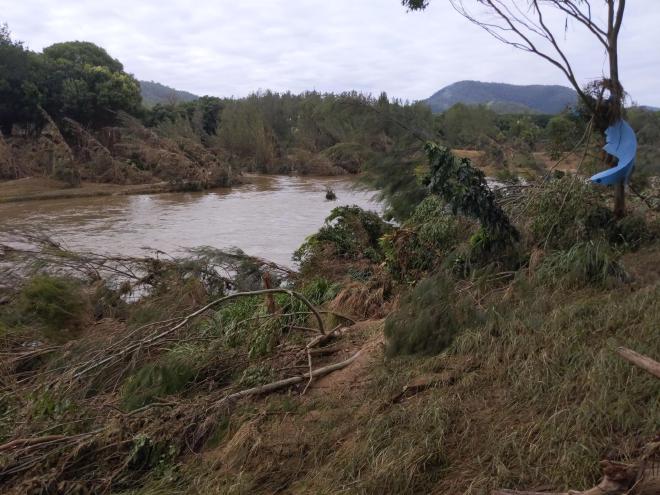
Parts of Australia are now breaking records for excessive rainfall and with this comes erosion on levels not heard of since the last damaging floods of 2011-2013 (2022 is possibly worse). As this is just a mere time ago in a horticultural sense, the young vegetation that had been replaced since the events has again been removed from the sensitive riparian zones and are possibly doomed to repeat the cycle going forward.
Up here in the headwaters of one of the main rivers that drains through our valley, thankfully the damage isn’t quite as catastrophic as other areas downstream (like Gympie) but the floodplains will still flow with enough rain like the current systems have delivered. With this means a possible loss of organic matter and silt/sand/rock destined for the Great Barrier Reef. Since colonial clearing began, our floodplains are mainly kept for grazing or production with razor-thin riparian zones of regenerating trees and senescent (or dying) larger remnant vegetation. Across these wide open spaces, sheet flow will carry material and without a structure to interrupt it, will take it to the drainage system and away from the site (think brown water). Fertile alluvial floodplains were built from silt deposition when floodwaters would rise frequently in the priorly pristine, non-channelised creeks and deposit silt, sand, and organic matter into the complexity of dense vegetation. Colonial and some current farming removed this vegetation which caused lowering of the creek bed which means the floodplains don’t function like they used to and deposition is a rare occurrence, if not violent when it now happens. See Natural Sequence Farming for more information about reconnecting creeks to floodplains and cycling of fertility.
Below is a standard floodplain across our area; a mowed paddock and mostly cleared of vegetation besides the production areas. This is not completely typical; having a production area of bamboo and trees is a rare occurrence when beef and dairy farming is the mainstay of the local economy. Most plains are maintained to be clear of all vegetation with slashing and spraying being common. The bamboo and its leaves will now act as an illustrative guide to deposition structures. Note the almost zero deposition of material across the entire area. The following structures are behind this below photo of the floodplain.
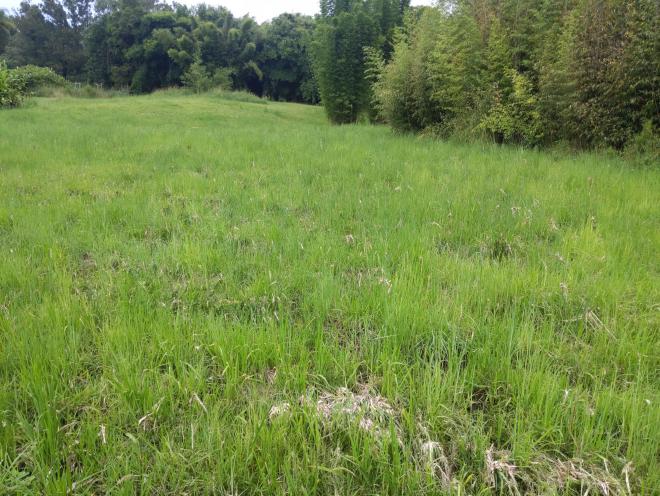
Having a structure perpendicular to flow in a floodplain is important for deposition with some caveats. Too small or unfixed and floodwaters can push against it and damage/remove it (think of something like shipping containers) or trees of the wrong age (small are flexible, old are sturdy).
Below is a solid structure which is an abandoned bathtub that is locked in from years of grass growth and some soil build-up. It is showing excellent deposition and its sturdiness allowed the excessive water to pass over it and its short length allowed water to pass around it without washing away. Other structures similar to this may be large to huge rocks, large keyed-in or driven-in logs/pylons, leaky weirs, gabions etc. These sorts of structures are expensive with a high energy embodiment but are a semi- to permanent mitigation strategy.
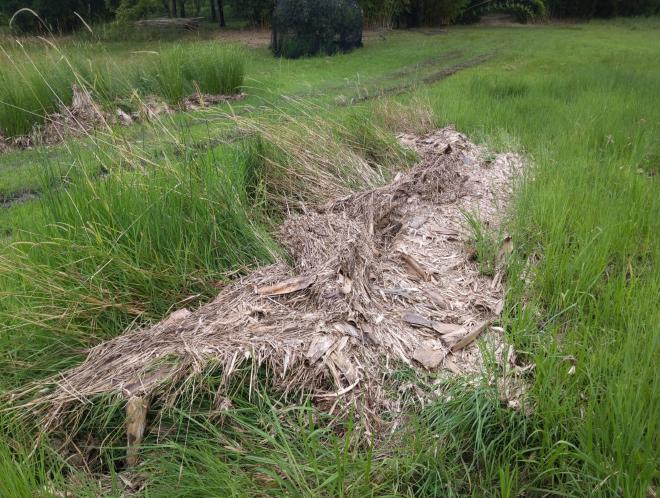
Below is a vegetation windrow which could be extrapolated to dense/mature vegetation or a brushfence. The water should be able to pass through this structure freely and this was locked in with other grasses, weed growth, and the haphazard, interlocking nature of bamboo branches. This demonstrates a tall windrow or band/belt of vegetation and has also deposited excellently. This requires either unique amounts of vegetation on site, good grass and weed growth to help secure it, or diverse layers of vegetation that has been planted and allowed to mature before bearing the brunt of a damaging flood. This could be more than 10 years of time, conditions dependent.
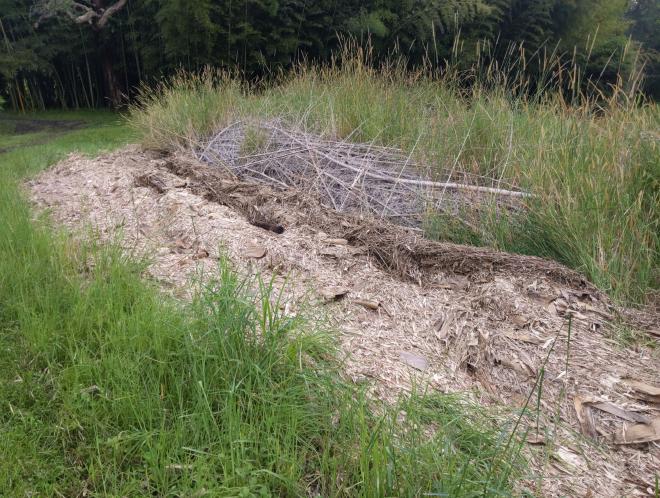
Below is a one year old Vetiver mere metres away from the two structures. While Vetiver is flood-resistant in a few months and could be classed as ready in a year, the clump will thicken over the next four years and will become better at filtering fine silt and organic matter over time. The Vetiver has folded and allowed excessive water to pass over it (thereby not washing away) and a secondary row has caught material again. Behind that is the sunken water chestnut paddy which was my “drought-proof nursery” (hardly needed for the past 3 years) and the roughness of the lower Vetiver clumps there has settled out significant material, including lengths of bamboo pole.
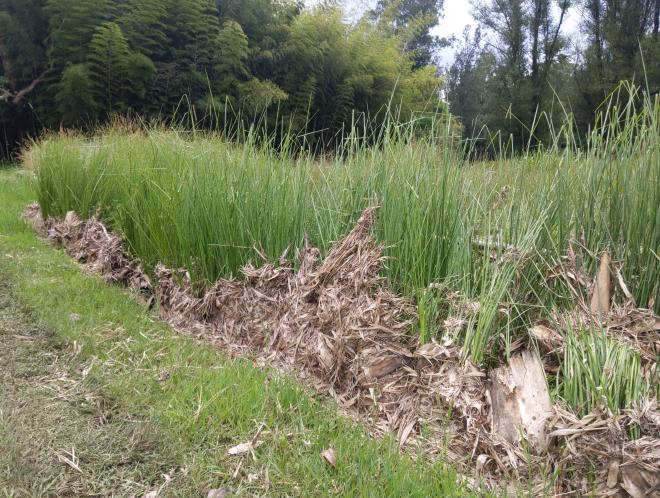
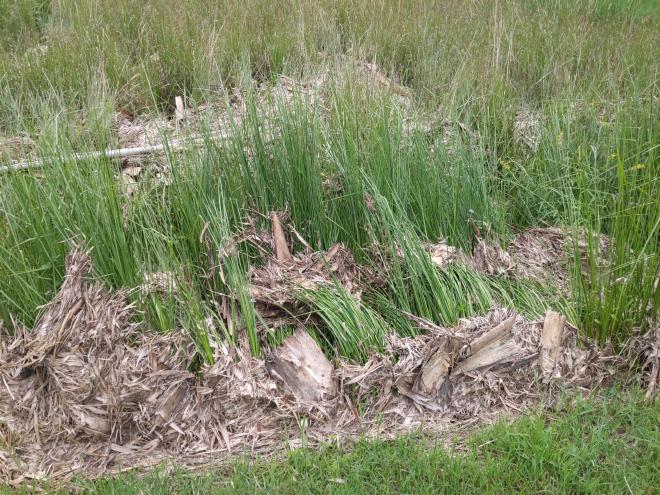
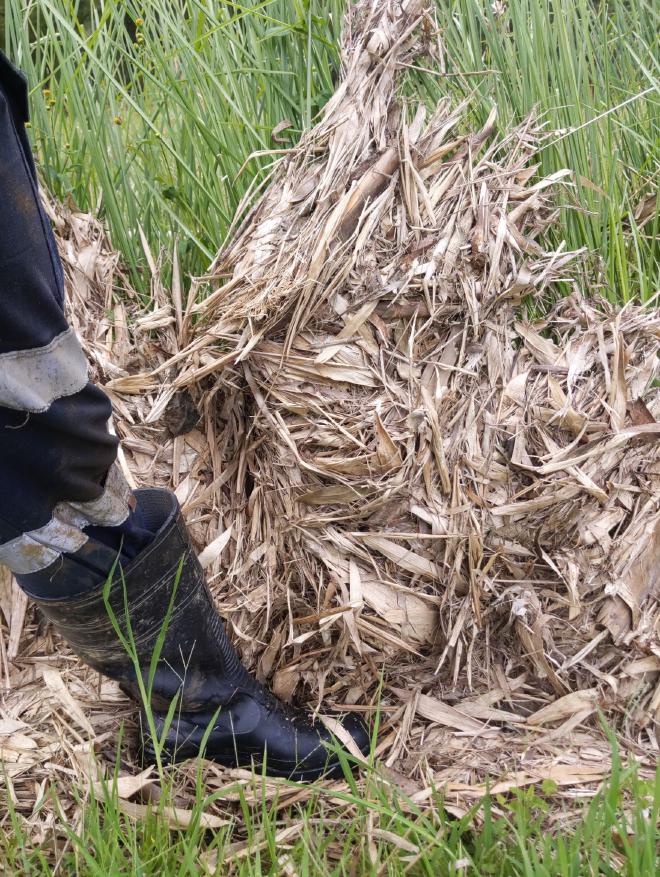
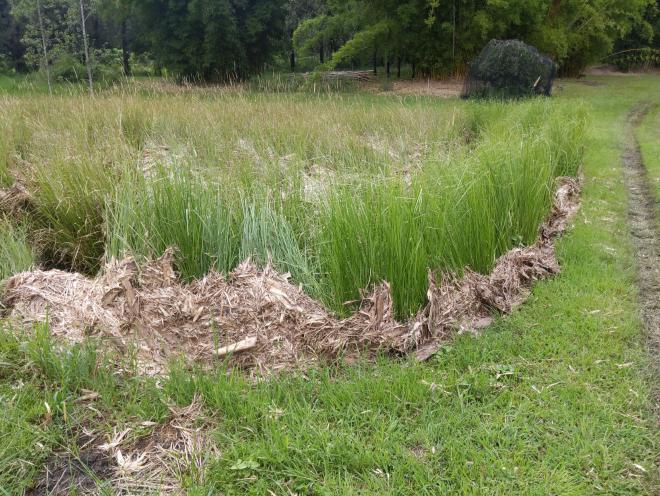
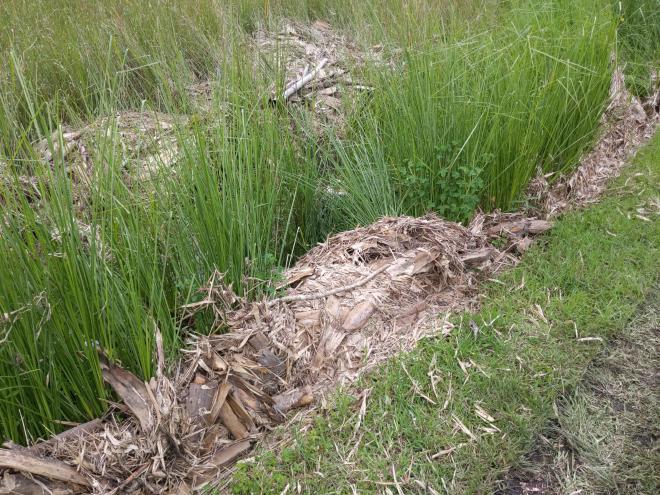
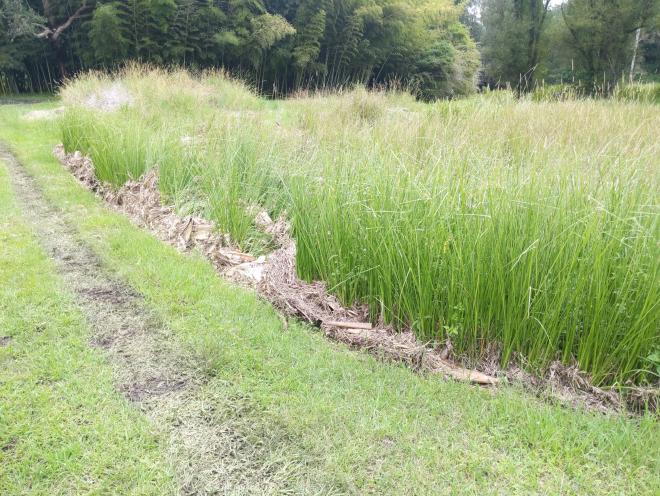
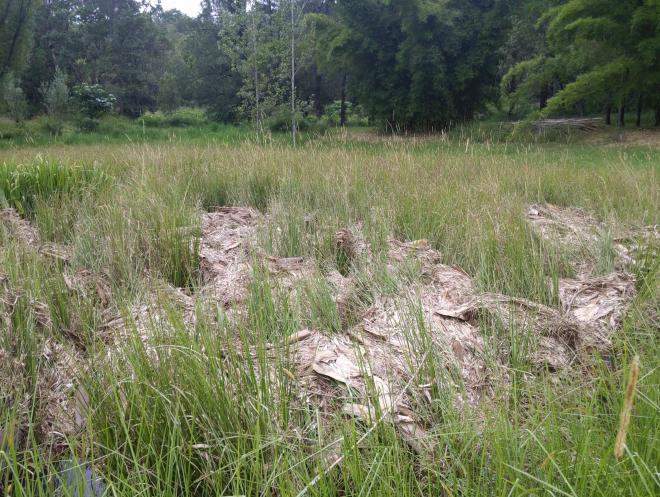
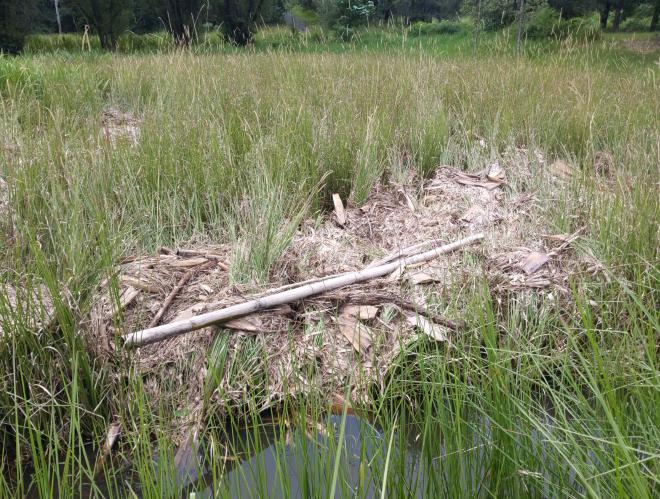
Now you may think I am biased towards Vetiver but out of those 3 options, only 1 of them is cheap and extremely easy for anyone to do. Access to a few mature Vetiver clumps, a shovel to dig them up, and a mattock to plant them and you can build an improving structure across a sunny floodplain that takes once a year maintenance, has a product of high-quality mulch for use elsewhere, and works relatively well. Combine Option 2 and Option 3 together; a Vetiver strip protecting a diverse planting of natural vegetation in a shelterbelt and you have the best of both worlds. Option 1 is the mainstay of engineers but requires access to capital, access to material and machinery etc. These engineering options may be crucial for highly erodible riverbanks or runaway headcuts but nobody could afford to place them across every catchment. Someone could build a series of Vetiver hedges in a weekend and after a year of irregular mowing or weed control with a hoe, would have a structure that doesn’t require fencing from animals, will compliment existing pasture or production without competition, and needs minimal continuing maintenance. Save the capital for areas that absolutely require it and look at Natural Sequence Farming for ideas on how to make your floodplains function again.
Related Links:
Soil: Formation and erosion - Australian State of the Environment
Soil erosion must be stopped ‘to save our future’, says UN agriculture agency
“The most meaningful indicator for the health of the land, and the long-term wealth of a nation, is whether soil is being formed or lost. If soil is being lost, so too is the economic and ecological foundation on which production and conservation are based.”